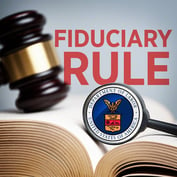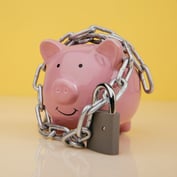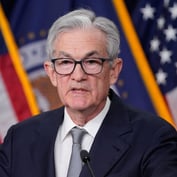Back when our overall economy was flatlining and the stock market was plunging, gold became a sexy investment pick among those who foresaw years of gloom and doom ahead. In the first three months of 2009, not only did the stock market continue its freefall, with the S&P dropping by more than 8 percent, but the Obama administration unveiled its $787 billion stimulus program, which caused many speculators to expect the return of runaway inflation.
A tumbling stock market combined with inflation fears provided the perfect setup for the return of gold as a cornerstone of many portfolios. Gold has long been considered a diversification play for people overloaded with securities as well as an inflation hedge. And for a while, it did not disappoint. Gold performed very well in 2009, rising about 11 percent that year, then soaring another 25 percent in 2010. The price peaked at $1923 an ounce back on September 26, 2011, and has been tumbling most of the time since then. After bottoming out at $1540 in March, it has now crawled back up to around $1640.
The hot question now: Is there another surge waiting in gold? Many financial pundits seem to think so. The Federal Reserve is set to hold its next policy meeting on September 12th and 13th, and there is a widespread feeling that it will announce a new round of bond purchases at that point. Even though the first two rounds of quantitative easing didn’t lead to widespread inflation, it’s still a touchstone of economics that pouring money into the economy could lead to higher prices. So more easing could provide a jumpstart to gold prices.
This may be already happening, to a certain extent. When the Federal Open Market Committee released the minutes of its latest meeting, earlier this week, hinting at further easing, the SPDR Gold Trust ticked up 0.8 percent on the day.
Another factor is that central banks have been buying gold lately, driving up the price. Purchases by central banks were up by more than 400 metric tons as of earlier this year, as opposed to a growth of just 156 metric tons in the year-earlier period. The World Gold Council has reported that it thinks those kinds of purchases will continue to increase in the near future.
In addition, there has been some evidence that gold tends to be depressed during an election year. The price of an ounce of gold is down nearly 15 percent since last September. Back in 2008, gold fell from more than $1000 an ounce in March to $740 by the time the presidential election came around in November. If that’s the case, then we can expect some sort of return to normal after November, with gold prices continuing on their upward trajectory.
There are other factors that can affect the price of gold, ones that are not necessarily in play now. The most common use for gold is not specifically for someone’s portfolio but in jewelry. Roughly two thirds of all gold demand each year is for jewelry, and the Number One country in terms of volume is India. Growth in the Indian economy, then, can have a direct impact on the price of gold. China too buys roughly as much gold for jewelry as the United States does.








 August 23, 2012 at 02:03 PM
August 23, 2012 at 02:03 PM










